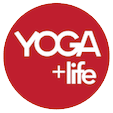Suffering Chronic Pain? A Guide for Developing Your New Yoga Practice | By Dr. Jonathan Bloch
A healthful, physical goal of any yoga is to lift the body up while decreasing compressive forces in joints and the spine — one major reason yoga can help chronic back and other pain sufferers where joint compression is a problem. Chronic compression and pain of joints comes from acute weakness or injury in specific muscles and tissues, and overcompensation and tightening of broader muscle groups in efforts to protect those specific areas. Chronic pain can settle into the body via complex patterns. Learning to find strength, flexibility and stretch through the ability to relax and breathe is no small challenge for many pain sufferers. The following five skill sets will help those wishing to develop a new yoga practice.
1. UNDERSTANDING EMBODIMENT & MINDFULNESS
This means having awareness and control of the body. The feeling of whole-body alignment and core integration will lead to physical benefits that allow one to trust internal strength and better support painful or injured areas. Neuromuscular patterning in chronic pain orients the body to tighten large muscle groups around injured or painful areas. Such guarding initially serves to protect one from painful compressive forces of gravity, but unless reprogrammed, will paradoxically add compression from a broader area of the body and cause new stress and deconditioning over time. Core strength and awareness lift the body away from gravity in a way that deep stretching can become both relaxed and fully supported by one’s breath. At that point, increased muscle length and flexibility can be found without risking increased joint compression.
2. BREATH OFFERS MORE THAN JUST RELAXATION
The lungs are the most important organs for sustaining vitality because inhalation brings oxygen to the body and stimulates movement of energy. Inhaling and exhaling with the arms lifted overhead further increases lung volume and decreases compressive forces on the spine, pelvis and internal organs. This is why pranayama and lung exercises come first in most yoga classes. The breath literally massages our injured and stagnant areas. Breathing is like an ocean current that both suspends us and creates a medium for exchange of healing.
The breath literally massages our injured and stagnant areas. Breathing is like an ocean current that both suspends us and creates a medium for exchange of healing.
3. WARM-UP EASY
Sun Salutations A and B are a good way to warm up the body because they are a sequence of front-body stretches, back-body stretches and core-line poses that follow simple planes of motion. They are not the only way to get the job done, but we do want to warm up the spine before proceeding to more complex asymmetrical poses and twists. Laws of spinal kinematics tell us that when motion is introduced in more than one plane, motion in any one plane reduces and alters the range of motion in every other plane. Embodying these combined barriers later in practice requires finer muscle tuning, and a good warm-up is key to delving deeper into poses safely.
4. FIND YOUR STUCK FASCIA
Free fascia from the periphery: fascia is the natural web that envelopes and encases our tissues. It surrounds our muscles and binds all body parts from our limbs to the large core of our centers. Freeing fascia from the periphery naturally helps ease motion in our core. If we epitomize our fascia to a pair of toed leggings, general discomfort happens when focal bunching or unbalanced pull occurs anywhere. We would not put our leggings on for best comfort starting with the waist band first; we would start by freeing the fascia around the toes and wrapping that fabric comfortably to support the foot and ankle before moving up the calf, knee and hip, and adjust the back and waistband last. From a fascial perspective, stretching the fingers frees motion in the hands and wrist, which frees the elbow, which in turn frees the shoulder and ultimately the neck. Neck pain sufferers should start their practice opening the arms and shoulders; low back pain suffers should start by opening the hips, hamstrings and calves.
5. DEDICATION IS KEY
Rehabilitating chronic pain is hard work and each step needs to be a reward. Patience is important, and also not comparing oneself to others, except to learn realistic goals and how others have done it. Search for classes that resonate with you. Talk to your gym or studio about more alignment-based classes and teachers who are helpful for students with injuries. Take two to four classes per week for six weeks. Learn the difference between being “a little sore” and new injury. Consider gentle and restorative classes too, and whatever else your body needs to stay healthy. You may not experience the benefit of pain relief after one class or one week, but health and regeneration is the reward for any dedicated practitioner.
Photo by Jess Watters.
Originally published in the Summer + Fall 2019 issue.
 Dr. Jonathan Bloch is a full spectrum integrated family practitioner and osteopathic physician with a mission to inspire personal health through mind, body and spiritual practices. You can learn more about him and his practice at yogischoicehealthcare.com.
Dr. Jonathan Bloch is a full spectrum integrated family practitioner and osteopathic physician with a mission to inspire personal health through mind, body and spiritual practices. You can learn more about him and his practice at yogischoicehealthcare.com. Not every nutrition shake is created equal and LyfeFuel’s is top tier. Made with 50+ whole food nutrients [...]

Subscribe to Our Tribe
Stay up to date with Y+L News, Events and special announcements.










